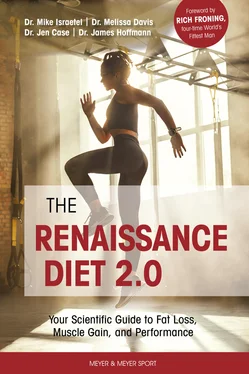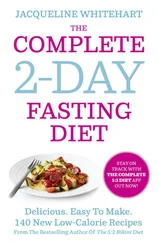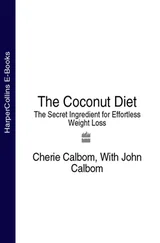Unfortunately, these mistakes often involve every bit as much effort as a successful diet. Every year, people find their dieting efforts largely wasted on unimpressive results, leading many to assume they are “hard losers,” “hard gainers,” or otherwise personally flawed. The true underlying problem is simply a mismanagement of dieting principles.
By getting to know the diet principle hierarchy, we can ensure that our hard efforts are being spent where they are most effective. As you read about each of the individual diet principles, please keep their hierarchical organization in mind so that when it comes time to program your diet, you can effectively manage the distribution of these factors to meet your goals.
KEY DEFINITIONS AND CONCEPTS
Some key concepts and definitions that will come up throughout the book are listed below. We will revisit many of these multiple times throughout the coming chapters, so be prepared to return for a refresher as needed throughout your reading:
An adult’s set point is the bodyweight that they are naturally inclined to maintain. Some people have a high set point and would become obese if they just ate and exercised as they pleased. Others have trouble maintaining sufficient bodyweight for best health when left to their own devices. Set points are genetic predispositions, but your body’s preferred weight can be changed.
A settling point is the weight your body is inclined to maintain, taking into account your current and historical dietary and activity practices. Your settling point can be very different from your genetic set point. Enough added fat or added muscle maintained for periods of months to years can permanently push your settling point above your genetic set point. In contrast, there is no convincing evidence as of this book that settling points fall permanently below genetic set points when weight is lost. The good news is that it is often the case that more overweight people have actually pushed their settling point far above their genetic set point as opposed to their having a very high genetic set point.
Muscle mass has its own independent set and settling points–some people are naturally more or less muscular regardless of diet and training, though these points are not affected as easily as those for general body\weight. Once more muscle has been gained and maintained for a year or longer, only a fraction of the original effort is needed to rebuild it if it is lost. Also, muscle takes much less effort to maintain than to build, a fact we can exploit in the construction of nutritional periodization.
A period of dieting for the purpose of losing fat. A common secondary goal on such a phase is to minimize muscle loss to the greatest extent possible.
A period of dieting for the purpose of gaining muscle. A common secondary goal on such a phase is to minimize fat gain to the greatest extent possible.
Post-Diet Maintenance Phase
Also known as a “diet recovery phase,” this phase occurs after a fat loss or a muscle gain phase, and its purpose is to maintain the changes made to body composition during the preceding diet. This period involves easing back into normal eating, slowly moving out of the deficit or surplus created by the previous phase. The purpose of this phase is also to reset metabolic and psychological homeostasis at a new bodyweight and establish new settling points. Post-diet maintenance begins at the end of a fat loss or muscle gain diet, and its duration will depend on the degree to which bodyweight and metabolism were changed by the previous phase. At the conclusion of post-diet maintenance, you can begin another weight-changing phase or move into long-term maintenance of the current weight.
Long-Term Maintenance/Balance Phase
In this phase of dieting, the individual’s physiology and psychology have adapted to the current state of the body. This phase typically starts after the post-diet maintenance phase and can last as long as the individual would like to maintain their results and live a healthy, active, and balanced life.
High-Volume Hypertrophy Training
High-volume hypertrophy training is needed to maintain muscle mass on a fat-loss diet or increase muscle mass on a muscle-gain diet. It consists of resistance training composed of multiple sets of exercises (8-20+ sets per body part per week), mainly in the 6- to 30-repetition range. This resistance training is ideally mainly composed of compound basics like squats, bench presses, rows, and so on–lifts that engage multiple joints and whole muscle groups. For more information, visit renaissanceperiodization. com and check out the eBook, Scientific Principles of Strength Training .
Low-Volume Strength Training
Low-volume strength training increases strength and power without changing muscle size. It is composed of fewer sets (5-15 per body part per week), usually in the 1- to 8-repetition range. This type of training is conducive to maintaining muscle during isocaloric periods (post-diet or long-term maintenance phases). It also has the added benefit of making the muscles more sensitive to the muscle growth effects of high-volume hypertrophy training for another fat-loss or muscle-gain diet.
Mesocycle is a term used to describe training on a month-to-month basis–periods of dedicated training usually lasting between four to eight weeks. The mesocycle is comprised of a series of microcycles, or week-to-week training phases. Mesocycles are strung together to form training macrocycles, which are long-term periods dedicated to progressing toward a particular goal. Mesocycles (or several mesocycles with the same goal sequenced together) are also colloquially known as “blocks” or “phases” of training.
Fractional Synthetic Rate of Muscle Growth (FSR)
FSR generally refers to the rate at which a certain amount of amino acids from dietary protein are incorporated into skeletal muscle. In other words, this describes how much of the protein you eat is used to grow muscle and how fast.
Fractional Breakdown Rate of Muscle Growth (FBR)
FBR generally refers to the rate at which a certain amount of skeletal muscle protein is broken down for use in the body. In other words, this describes how much muscle tissue is lost during periods of insufficient training, insufficient energy availability, or insufficient circulating amino acids and how fast.
The P-Ratio describes the ratio of fat to muscle gained or lost on a diet. A favorable P-Ratio on a muscle gain phase would mean gaining larger amounts of muscle and very little fat. One of the reasons to periodize diet phases for muscle gain is to maximize the P-Ratio of each gaining phase so that more muscle than fat is gained over the long term.
Beginner, Intermediate, and Advanced Lifters
In this book we will define beginners as having around 0 to 3 years of structured lifting experience, intermediates as having roughly 3 to 6 years of experience, and advanced lifters as having 6+ years of experience. These are not precise timelines, but rather serve as a rough guide to classify lifting experience. In general, beginners gain muscle and lose fat more readily than intermediate and advanced lifters. Advanced lifters need more voluminous training to gain even a small amount of muscle compared to less experienced counterparts. While genetics and other factors play a large role in muscle growth responses, the relative differences between levels of experience are consistent. In other words, there may be outlier individuals who gain more muscle as advanced lifters than less genetically inclined beginners, but on average those early in their lifting career will have better responses to training than their more experienced counterparts.
Читать дальше












